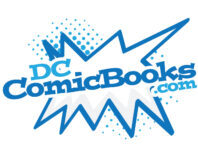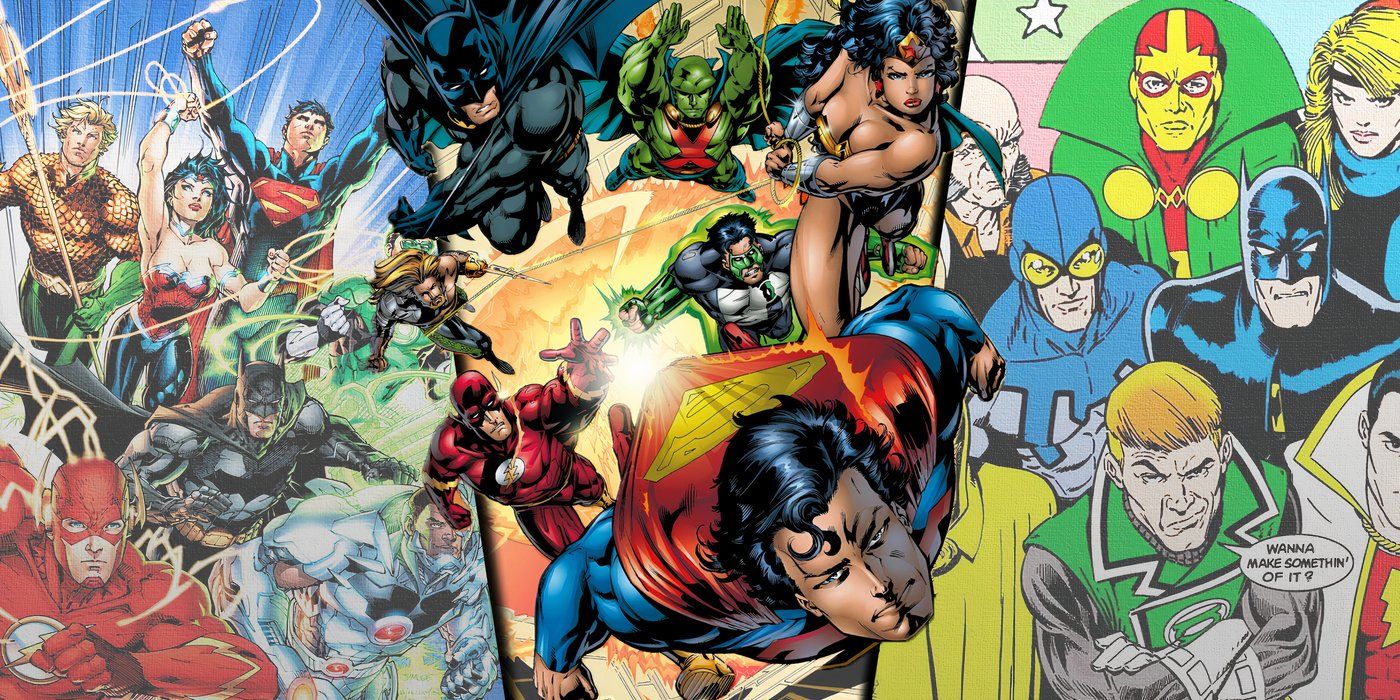[[{“value”:”
DC Comics’ main super team, the Justice League, has existed since near the beginning of the Silver Age. As a follow-up to the Justice Society, DC once again found success in gathering all its biggest heroes for a single super team.
The Justice League has experienced ups and downs both as a team and as a comic. To stay on top, the League has had to change rosters and even names in the past, but fans remained connected to them no matter what happened. Though the next Justice League era is still a ways off, fans can still look back and remember some of the best eras the team ever had.
10 The Silver Age Is The Foundation Of The Justice League
First Appearance: The Brave and the Bold Vol. 1 #28 By Gardner Fox, Mike Sekowsky, Bernie Sachs, Joe Giella, Murphy Anderson, Gaspar Saladino
10 Worst Things About Being Batman’s Love Interest
Bruce Wayne has a few red flags, like villainous exes and baggage that might make dating him, or his costumed alter ego Batman, a bit of a nightmare.
For the Justice League, everything begins in the Silver Age, where the world’s greatest heroes unite to fight against an alien threat known as the Appellaxians. After their victory, these mighty heroes realized they could do more good by coming together to fight threats. Though the roster started with only seven heroes, it wasn’t long before they added other mainstays like the Atom, Green Arrow, and Black Canary to fill out the team.
This era features key moments in League history, like the origins of some of their biggest villains, but it might take some getting used to. While there are some great Silver Age comics on DC Universe Infinite right now, the writing is less complex than what would be released even a decade later. Nonetheless, it’s easy to see the potential the League had, even at the beginning.
9 The Expansion Era Ensured There Was A Justice League Comic Every Week
Beginning: Justice League Spectacular #1 By Dan Jurgens, Ron Randall, Rick Burchett, Randy Elliott, Gene D’Angelo, and Bob Pinaha
After “Breakdowns,” the Justice League moved away from the “Bwahaha” era and back into traditional superhero adventures. While it was a weird transition at first, the team got even bigger in the end. Suddenly, it wasn’t just Justice League America, Justice League International, and Justice League Europe, but Justice League Task Force as well.
This era saw Superman return to lead one team, while other Justice League mainstays like Wonder Woman and Hal Jordan also returned. This version of the League experimented more than any other with its line-ups since it had four different versions of the team to work with. Its biggest weakness was giving in to some of the excesses of the ‘90s in terms of art and “extreme” storytelling.
8 The Next Generation Made Younger Heroes Step Up To The Next Level
Beginning: Justice League of America Vol. 2 #41 By James Robinson, Mark Bagley, Rob Hunter, Marlo Alquiza, Walden Wong, Pete Pantazis, Rob Leigh
10 Best Green Lantern Mysteries
Hal Jordan and the Green Lantern Corps have been prominent in a few comic mysteries that have revealed the true origins of the DC Universe and more.
Right before the New 52, DC had what might be its last experimental era with the Justice League. These days, everyone’s used to the roster consisting of roughly the same dozen or so heroes. The Next Generation briefly removed the team from only consisting of A-Listers, perhaps for its final time.
Heralded by James Robinson, this brief era took the team places it hadn’t been before. Experienced younger heroes like Dick Grayson, Donna Troy, and Jade took over the League, saving the world from classic Justice League threats like Eclipso and Starro. Sadly, this run was cut short thanks to Flashpoint, and people only now appreciate how different it was.
7 Post-One Year Later Era Revived The Satellite Era
Beginning: Justice League of America Vol. 2 #1 By Brad Meltzer, Ed Benes, Sandra Hope, Alex Sinclair, Rob Leigh
After Infinite Crisis, the Justice League disbanded for a year, allowing its major heroes to recharge for a time. The team reformed around a core mix of the Justice League’s Satellite Era and other well-known heroes, like Arsenal and Vixen. The Trinity specifically assembled this version of the team, as they each tapped heroes they trusted the most.
The early part of this era was devoted to the team dealing with ghosts from their past, like Red Tornado or their connection to the Legion of Super-Heroes. This era will mostly speak to fans who liked the idea of the Satellite Era but don’t want to deal with ‘70s and’ 80s-style storytelling. Still, it was nice that DC attempted this with the League again for a short time.
6 New Justice Era Gave Fans A Serious Version Of The Super Friends
Beginning: Justice League Vol. 4 #1 By Scott Snyder, Jim Cheung, Mark Morales, Tomeu Morey, Tom Napolitano
The Justice League went into another new era following the Metal event story. Realizing they needed to be bigger than ever to deal with bigger threats, they constructed the Hall of Justice while expanding their team. The Hall of Justice didn’t just have room for the main Justice League, but also Justice League Dark, and co-operated remotely with a space division.
This era saw the team face some of its most dangerous enemies while solving mysteries that stretched back to the dawn. Still, this era tried to have as much fun as possible while raising the stakes. Effectively, it was the Super Friends fighting against the Legion of Doom. This era featured some of the Justice League’s most desperate fights and even ended with the team being defeated by Luthor and Perpetua.
5 The Post-Forever Evil League Added Villains To Help During A Dangerous Time
Beginning: Justice League Vol. 2 #34 By Geoff Johns, Scott Kolins, Andrew Dalhouse, Carlos M. Mangual
10 DC Villains The Justice League Went Too Easy On
The Justice League might have had a much easier time if they had used more extreme measures on DC villains like Darkseid and The Batman Who Laughs.
Following Forever Evil, the Justice League line-up shifted once again. Just barely surviving in their battle against the Crime Syndicate, the League chose to expand. Lex Luthor and Captain Cold were brought on despite their criminal pasts, allowing the League to watch over them while increasing their firepower.
This new roster helped the team prepare for the Darkseid War, one of the Justice League’s most dangerous challenges. Many of the League’s members were granted power beyond their wildest imaginations, turning into deities. As they battled not only Darkseid but also the Anti-Monitor, the League struggled to retain its connection to humanity. Quietly, this era featured some of the coolest Justice League stories of the 2010s.
4 The New 52 Era Created A New Big Seven For The Justice League
Beginning: Justice League Vol. 2 #1 By Geoff Johns, Jim Lee, Scott Williams, Alex Sinclair, Pat Brosseau
Coming out of oneof DC’s most important Justice League events ever in Flashpoint, the Justice League got a fresh start with a completely new history. This time, the Big Seven were Superman, Batman, Wonder Woman, Green Lantern, Flash, Aquaman, and Cyborg, who came together to repel an invasion from Apokolips. Though they were younger, their power and teamwork led them to a victory over Darkseid, proving there were great things in the team’s future.
This squad felt like the classic JLA but with some key differences from having no continuity. Superman and Wonder Woman’s relationship added some sexual tension to the team, and their inexperience meant the team butted heads more frequently. The only real issue was the team’s line-up could feel stale to long-time fans.
3 The Satellite Era Is The Best Classic Justice League Era
Beginning: Justice League of America Vol. 1 #78 By Dennis O’Neil, Dick Dillin, Joe Giella
10 Best Justice League Time Travel Comics
The Justice League and time travel have always went well together.
When people think of the “classic” Justice League, they remember the Satellite Era. After the team was forced out of Happy Harbor due to villain attacks, they built a new headquarters 22,300 miles in the sky. In geosynchronous orbit with Earth, the Justice League satellite allowed the team to watch over the planet and help out anywhere trouble appeared.
At the same time, the ranks of the Justice League swelled to include most of the relevant adult heroes on Earth. It wasn’t just the usual Big Seven, but also heroes like Red Tornado and Zatanna and newer heroes like Firestorm. Thanks to the wide array of heroes and their abilities, the team was built to handle any issue.
2 The Justice League International Era Allowed The Team To Have Fun
Beginning: Justice League Vol. 1 #1 By Keith Giffen, J.M. DeMatteis, Kevin Maguire, Terry Austin, Gene D’Angelo, Bob Lappan
After Crisis on Infinite Earths, the Justice League needed a new direction. Following the maligned Justice League Detroit era, the team got a complete reboot. In this new universe, the team was reformed around Batman and a group of B-Listers for a book that was largely comedy-focused.
This new era even saw the team change names as it became Justice League International. With a global roster of heroes and a book that was half superhero comic, half-sitcom, DC found a surprise hit. Things were so successful that it spawned a second book in the Justice League Europe, giving the team two ongoings for the first time ever. This era continued well into the ‘90s until the Justice League event Breakdowns. One of the mistakes that still haunts Justice League comics involves retconning some of the best parts of this era.
1 The JLA Era Was Peak For The Team
Beginning: Justice League: A Midsummer’s Nightmare #1 By Fabian Nicieza, Mark Waid, Jeff Johnson, Darick Robertson, John Holdredge, Anibal Rodriguez, Pat Garrahy, Ken Lopez
When Grant Morrison and Howard Porter’s JLA run began, fans hadn’t seen the proper “Big Seven” Justice League work together in over a decade. Finally, after the fall of all the different Justice Leagues in the ‘90s, DC was ready to team the big guns together again. During both Morrison and Mark Waid’s run on the team, the JLA era featured many of the Justice League’s best stories, where they faced some of their most powerful opponents.
Though the pitch was all about getting the “Big Seven” together, this era saw a host of new heroes join the roster, both legacy characters like Kyle Rayner or Connor Hawke and brand-new heroes like Steel and Huntress. Morrison’s goal was to make this team feel like heroic versions of the Greek gods, striding down to protect humanity in their time of need. It gave the run an epic feel that hasn’t been rivaled since.
DC Comics
DC Comics follow the adventures of iconic superheroes such as Superman, Wonder Woman, Batman, and more.
“}]] As the Justice League makes its triumphant return after Absolute Power, it’s a great time to look back at what worked across the team’s iconic eras. Read More

